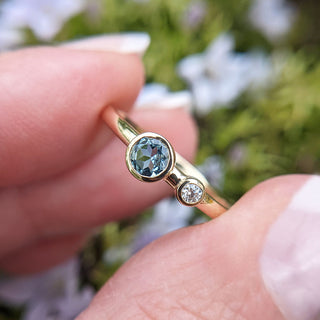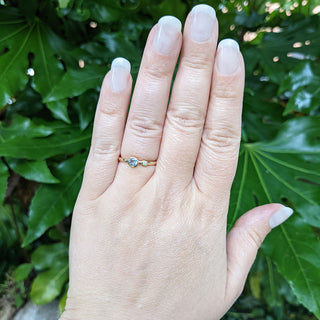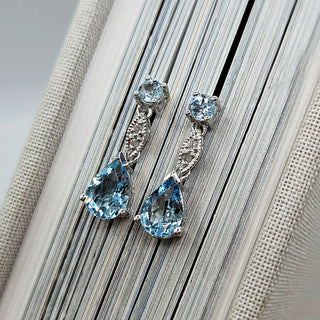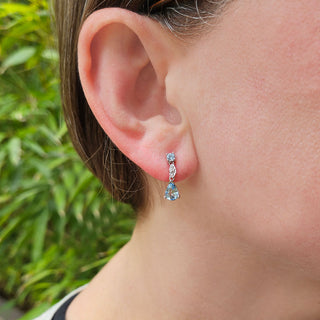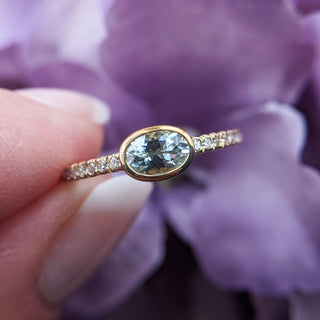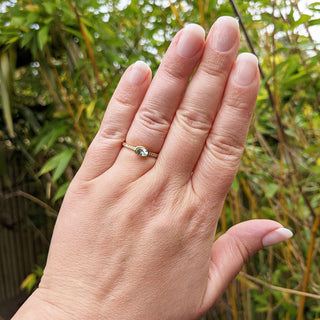About Aquamarine
Aquamarine is a gemstone with a serene and captivating allure, and it possesses distinctive attributes and a rich history. Aquamarine belongs to the mineral family known as beryl. Beryl is a mineral composed of beryllium aluminium cyclosilicate and is notable for its various gemstone varieties, including emerald (green), morganite (pink), and heliodor (yellow). These gemstones share the same mineral composition but exhibit distinct colors due to the presence of different trace elements within their crystal structures. Let's dive into the various facets of aquamarine below:
Colours: Aquamarine is prized for its delicate blue to blue-green hues, reminiscent of the tranquil ocean waters. Its color is primarily attributed to traces of iron within its crystal structure. The finest specimens exhibit a pure, vivid blue, while lighter shades of aqua are also valued.
Hardness: Aquamarine boasts a commendable hardness, ranking 7.5 to 8 on the Mohs scale. This durability ensures its suitability for use in jewellery, with resistance to most scratching and wear.
Lustre: Aquamarine exhibits a vitreous to sub-vitreous lustre, lending it a subtle yet elegant sheen when properly cut and polished.
History: The name "aquamarine" originates from the Latin words "aqua" (water) and "mare" (sea), underscoring its connection to the sea. Throughout history, aquamarine has been cherished as a symbol of tranquility, protection for sailors, and clarity of thought.
Locations/Deposits/Geology: Aquamarine is commonly found in pegmatite formations in various parts of the world, including Brazil, Madagascar, Russia, and the United States. The largest aquamarine crystals have been sourced from Brazil's Minas Gerais region.
Common Treatments: Heating is a common treatment to improve the color and clarity of aquamarine. This process can remove yellow or greenish tints, enhancing the gem's blue or blue-green hues. Such heat treatment is widely accepted within the gemstone industry.
Value: The value of aquamarine is primarily determined by its color, clarity, size, and overall quality. Deeper, more saturated blue tones are considered more valuable, especially when free from visible inclusions. Large, eye-clean aquamarines are highly sought after by collectors and jewelry enthusiasts.
Common Jewellery Applications: Aquamarine is a favored gemstone for various jewelry pieces, including engagement rings, necklaces, earrings, and pendants. Its soothing color and graceful transparency make it a popular choice for both contemporary and vintage designs.
Birthstone: Aquamarine is the birthstone for the month of March, symbolizing courage, serenity, and clarity. It is often gifted as a meaningful token to individuals born during this month.
Meanings: Beyond its aesthetic appeal, aquamarine is associated with qualities such as calmness, balance, and protection. It is believed to bring peace and harmony to its wearer, promoting inner tranquility and emotional well-being.
In summary, aquamarine's ethereal blue-green hues, durability, and historical significance have solidified its place as a cherished gemstone. Whether as a symbol of the sea's serenity or a stunning jewelry centerpiece, aquamarine continues to captivate and evoke a sense of tranquility in those who appreciate its understated elegance.

